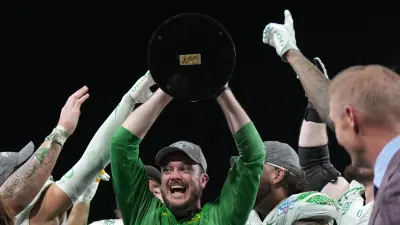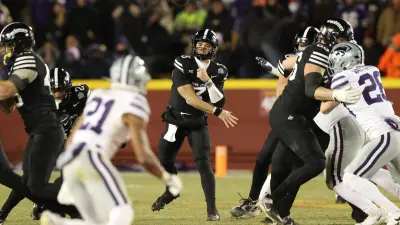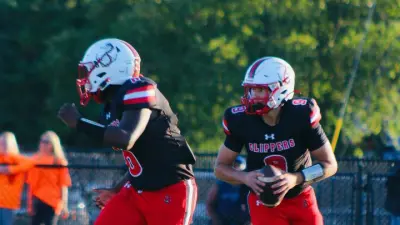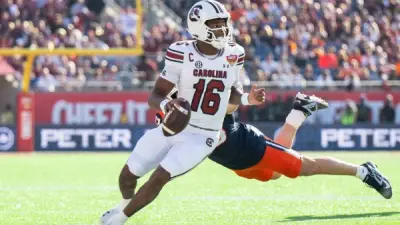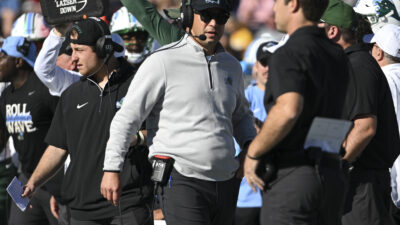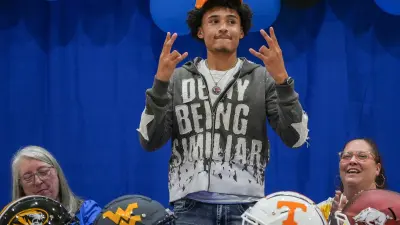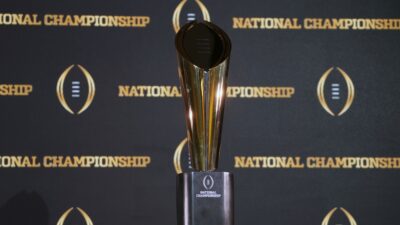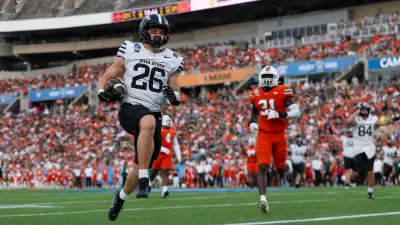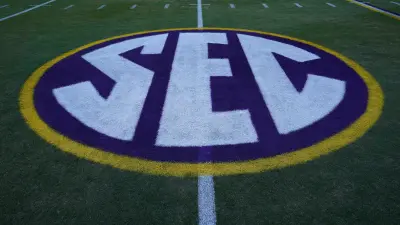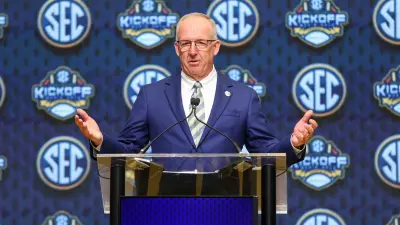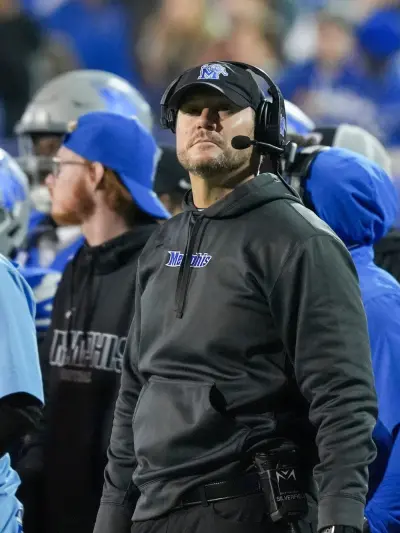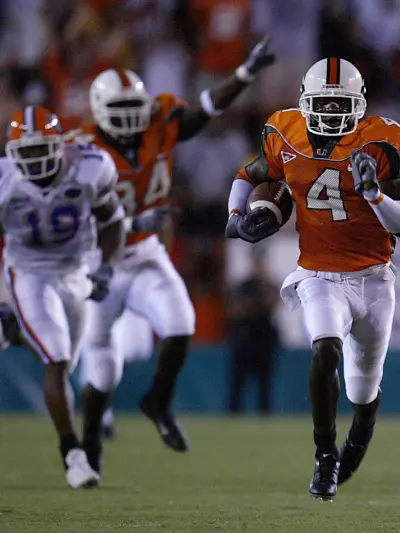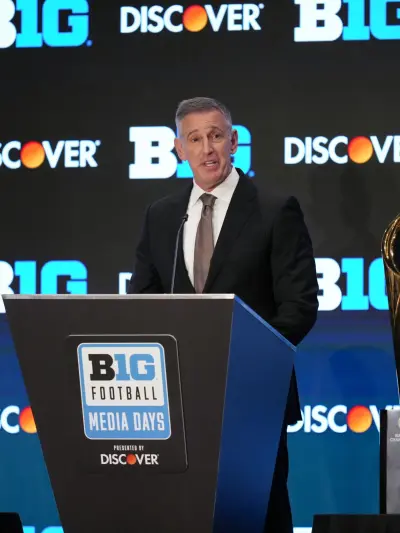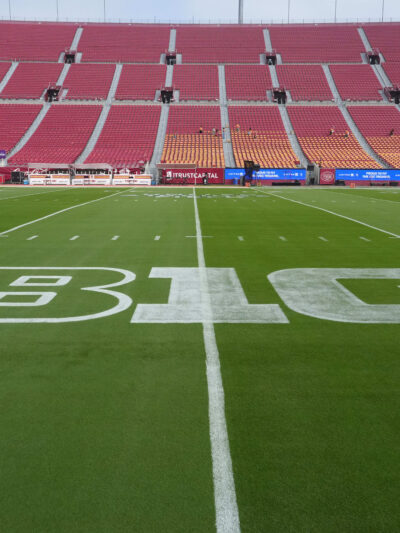The College Football Playoff has been so successful in generating big excitement for the final four that they are expanding it to 12 teams in the near future.
The success of the College Football Playoff has come at the cost of the rest of bowl season. Even prestigious and marquee bowl games like the Rose and Orange Bowls aren’t immune to opt-outs. This year’s Sugar Bowl between Alabama and Kansas State is an anomaly where there was full participation from both sides.
The question needs to be asked, why can’t every bowl be like the Sugar Bowl and have full participation?
“There’s more drastic change going on in college athletics than I can ever remember and maybe ever in its history,” Bowl Season executive director Nick Carparelli says. “It’s time now to shift our focus to Bowl Season and determine what role we play in the college football calendar. Everything else in college athletics is evolving, Bowl Season will evolve as well.”
Carparelli further added,
“People need to take a deep breath, just because some bowls don’t have an impact on the national championship, it doesn’t mean it’s not meaningful to a lot of people. Even the lowest-rated bowl games have 2 million viewers, which out-rates some of the best regular season college basketball games and other alternative programming. Coaches want to play in them and 90% of student-athletes want to play in them.”
—Bowl season executive director Nick Carparelli
“It’s not an either-or proposition: Together the CFP and bowls make up the college football postseason.”
More Sports News
With the expansion of the College Football Playoff, most likely we will expect the prestigious bowls that make up the New Year’s Six to be consumed by the expanded playoff, so how should Carparelli and his committee proceed with the rest of bowl season?
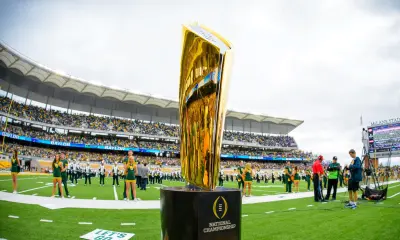
1. Eligibility Requirements
There are two paths the committee can take in regard to eligibility.
The first option is to raise the standard to 7-5 and eliminate some bowls.
The second option is keep the standard as it is right now with the same number of bowls.
The issue with raising to a 7-5 requirement is the last decade has seen an unprecedented amount of 6-6 teams make bowl eligibility. Last year saw a record 22 teams make bowls at 6-6, this year 19 teams made it at 6-6.
Logically you cannot raise the requirement and keep the same number of bowls, it just won’t work.
While I prefer fewer bowl games, I get quickly reminded why bowls are so special when I watch the early bowl games: the excitement the players get from this experience. Who am I to take that away? I also feel when you have in the final week of the regular season a pair of 5-6 teams fighting for bowl eligibility, it enhances that game to be more interesting because there is a bowl on the line.
For the time being, I would leave the 6-6 requirement alone unless they want to get rid of bowl games, which we know won’t happen because the money is still there.
2. The Opt-Outs
This season is no different than previous seasons where we have bowl opt-outs in some key games:
- Orange Bowl – Tennessee WR Jalen Hyatt and WR Cedric Tillman
- Sun Bowl – Pitt RB Israel Abanikanda and DL Calijah Kancey
- Citrus Bowl – Purdue QB Aidan O’Connell and WR Charlie Jones
- Rose Bowl – Penn State CB Joey Porter and Utah TE Dalton Kincaid
My first objective in addressing the opt-out situation would be to set an opt-out deadline.
In this season’s Pinstripe Bowl, All-American center John Michael Schmitz, who participated in bowl festivities and preparation “respectfully” opted out last minute before the bowl game. To me, opting out “respectfully” just hours from kickoff is a gutless and classless move.
Players should be given 48 hours after bowl announcements to decide whether they will play or forego the bowl. It’s a straightforward decision.
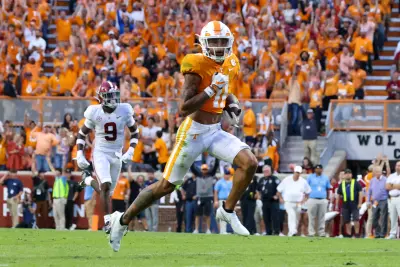
3. NIL Opportunities
Furthermore entice bowl participation I would suggest the following:
- For draft-eligible players, a draft grade would be assigned and a policy aligned with a one-year salary of the previous draft year contracts would go into effect.
With the league minimum set for $750,000 for 2023 NFL Draft picks and with each first-round pick signed multiyear contracts north of $10 million this gives players assurances against injury.
I feel for bowl games there should be a monetary prize awarded to both teams but instead of an equal share, there should be a winner’s purse and a loser’s purse.
Additionally, bowls can create NIL opportunities for players from the sponsors of the games themselves.
For example, with Prudential Financial being the sponsor of the 109th Rose Bowl, could lucrative opportunities for Joey Porter Jr. or Dalton Kincaid from the investment firm keep them interested in playing this game?
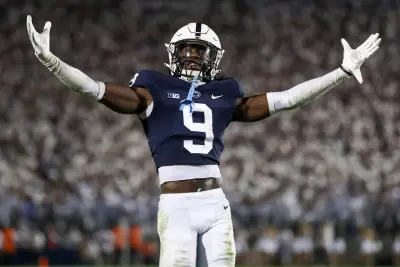
4. Conference Alignments
If one thing that peeves fans during the matchups of bowls, it is finding out bowls have arrangements with certain conferences. In this day and age, there needs to be flexibility introduced to the structure. I would not want the bowls to become a free-for-all fight over certain power conference teams, but I would want flexibility introduced if a better matchup can be created.
What also needs to be sorted out is schools like Missouri, which opted out of playing Kansas in the Liberty Bowl.
This is a tricky situation because, for instance, had Ohio State not made the College Football Playoff, they would have ended up in the Rose Bowl yet again, a game where they couldn’t even sell out their own ticket allotment just last year.
This balance is tricky and ultimately I feel the bowl should have the upper hand and final say. It is situations with Missouri that are way more critical to the bowl system than the Ohio State situation.
Arkansas vs. Kansas was a fantastic Liberty Bowl. But a Kansas and Missouri Liberty Bowl would have been bigger and better.
5. Eliminate ESPN’s Monopoly
ESPN broadcasts 38 of the 41 bowl games that will take place this bowl season. The three bowls not on ESPN are the Sun Bowl on CBS, Holiday Bowl on FOX, and Barstool Sports Bowl which was streamed.
ESPN owns 17 bowls outright, thus those bowls will be broadcasted by ESPN as long as they maintain ownership.
The other 24 bowl games can be up for bid, and they should. The exposure other networks can give bowl games with their available time slots is key.
With the Big Ten’s new broadcasting contract going into effect in July 2023, the networks involved (NBC, CBS, and FOX along with Peacock) want to get as much live sports content as they can. You can bet the bowls will be involved in the next round of network negotiations.
Currently, each individual bowl negotiates its own broadcasting contract. This decentralized model has its own pros and cons, but ultimately, the more prime visibility for these bowls gives them opportunities to have better sponsors. That in turn creates more potential revenue for players and coaches, as well as more chances to be showcased in a favorable time slot.
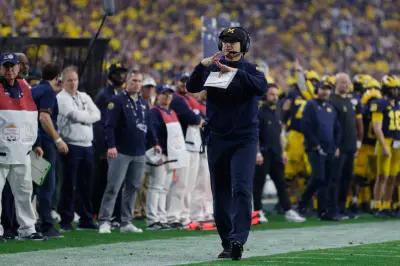
Conclusion
They tell you as you get older, the world you grew up in slowly disappears and eventually does not exist in your present time.
For college football fans, the era when bowl games were important has been largely damaged, if not killed outright, by the College Football Playoff.
The playoff is not going away, but the committee’s task come the spring, when they address the rest of the bowl slots, is to try to keep bowl games relevant and viable. While a lot of my suggestions have a professional sports model to them, collegiate sports the way we knew them no longer exist.
We are living in a time where we need to adapt to the changes in the landscape and provide assurances and financial resources for players to participate in the games.
Opting out and marginalizing bowl games so that they become essentially 2023 preseason games isn’t good for the long-term viability of bowl games.
The time is now to determine whether bowl games are worth saving or not.
